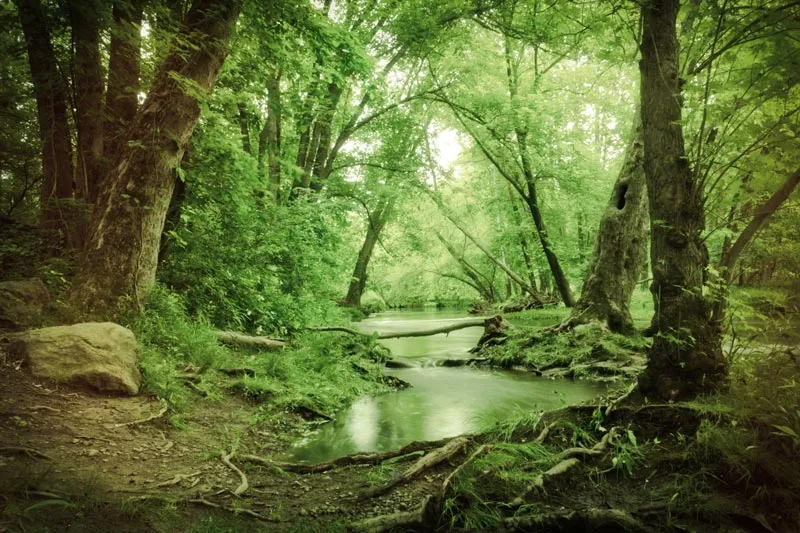Why Swamps Aren’t Scary—They’re Magical

Let’s clear something up right from the jump: the swamp is not trying to eat anybody.
For years, swamps have been unfairly portrayed in movies as dark, creepy places where something is always lurking just beneath the surface—usually with too many teeth and a soundtrack full of suspenseful violins. But after guiding people through Louisiana’s wetlands for decades, I can confidently say this: the swamp is less of a horror movie and more of a hidden masterpiece.
It’s not scary—it’s magical. And, yes, it does occasionally smell like nature doing its thing.
Welcome to the Real Swamp
The real Louisiana swamp isn’t a place where villains hide or where shoes get mysteriously lost forever. It’s a living, breathing ecosystem teeming with wildlife, history, and that special kind of peace you don’t find in a city. The trees aren’t trying to trap anybody, the water isn’t haunted, and the only thing most alligators want to eat is fish—not tourists.
When people finally step onto a tour boat and glide through those cypress-lined channels, they usually stop clutching their water bottles and start saying things like “Wow,” “Look at that,” or my personal favorite, “Why is it so quiet?” (To which the answer is: because the swamp doesn’t need to yell to get attention.)
A Symphony of Stillness
The quiet of the swamp is different. It’s not the eerie, “something’s going to jump out” silence. It’s the kind that calms the brain. It lets people hear things they forgot they missed—like frogs clicking in the brush, the breeze nudging the water, and birds calling out from treetops that are older than some countries.
And then there’s the slow, steady movement. A good swamp tour doesn’t race. It drifts. The still water acts like a mirror, reflecting trees and sky in a way that makes it hard to tell where land ends and dream begins. No wonder artists, photographers, and wide-eyed city folks keep coming back.
Swamps Have More Personality Than a Reality Show
People think of the swamp as empty space. It’s not. It’s packed with more characters than a soap opera.
There’s the egret, strutting like it owns the place. The raccoon that probably is up to something shady. The turtles stacked like pancakes on a log. And of course, the gators—cool, calm, and not nearly as interested in humans as humans seem to be in them.
Then there’s the flora. Spanish moss drapes from the trees like it’s dressing for a masquerade ball. Water lilies float like they have nowhere to be. And the cypress knees? No one really knows what they’re doing, but they’ve been doing it for hundreds of years and seem pretty confident about it.
Where the Past Lives in the Present
Swamps aren’t just about plants and animals—they’re about history. Before the interstates and high-rises, the swamp was home, highway, grocery store, and fishing spot. Generations of people lived off the land here, and many still do.
Old stories hang in the trees like the moss—passed down from boat to boat. Indigenous tribes, Cajun families, and generations of trappers and fishermen all added their own chapter. The swamp has never just been background. It’s always been part of the story.
Not a Death Trap—A Life Support System
Turns out, the swamp isn’t just pretty—it’s useful. Wetlands like the ones in Louisiana act as natural filters, cleaning water, reducing flooding, and giving fish and birds a place to start families. Some folks pay good money for water features and landscaping. The swamp does it all for free, with a bit of muddy flair.
Still, it gets a bad rap. People think “swamp” and picture bugs, snakes, and sinking mud. And sure, those things are around—but so are sunsets that light the water on fire and oak trees that feel like they’ve been here since time began. With the right guide, most visitors forget all about the bugs and start seeing beauty in every direction (although a little bug spray doesn’t hurt).
Misunderstood, But Not Mysterious
Most people don’t fear the swamp because they’ve been in one—they fear it because they haven’t. It’s the unknown that seems spooky. But once people get out there, they start to get it. The swamp isn’t a place to be afraid of. It’s a place to be curious about. A place that rewards slowing down, paying attention, and letting the wild speak for itself.
And frankly, if anyone is afraid of the alligators, just remember—they’re some of the laziest reptiles in the animal kingdom. Unless someone is planning to jump in the water wearing a pork chop necklace, chances are good the gator will stay exactly where it is, enjoying the sun and ignoring the humans floating by with cameras.
A Front-Row Seat to Magic
Every day, people step off our boats changed. What started as a “we thought it would be scary” afternoon turns into a “we never knew it could be so peaceful” memory. They learn that swamps are not something to avoid—they’re something to appreciate, respect, and protect.
Louisiana’s wetlands are part of what makes this region unlike anywhere else in the world. They’re not stage props or leftover land. They’re alive. And when given the chance, they show just how full of wonder a little water, a few trees, and a couple of gators can be.
